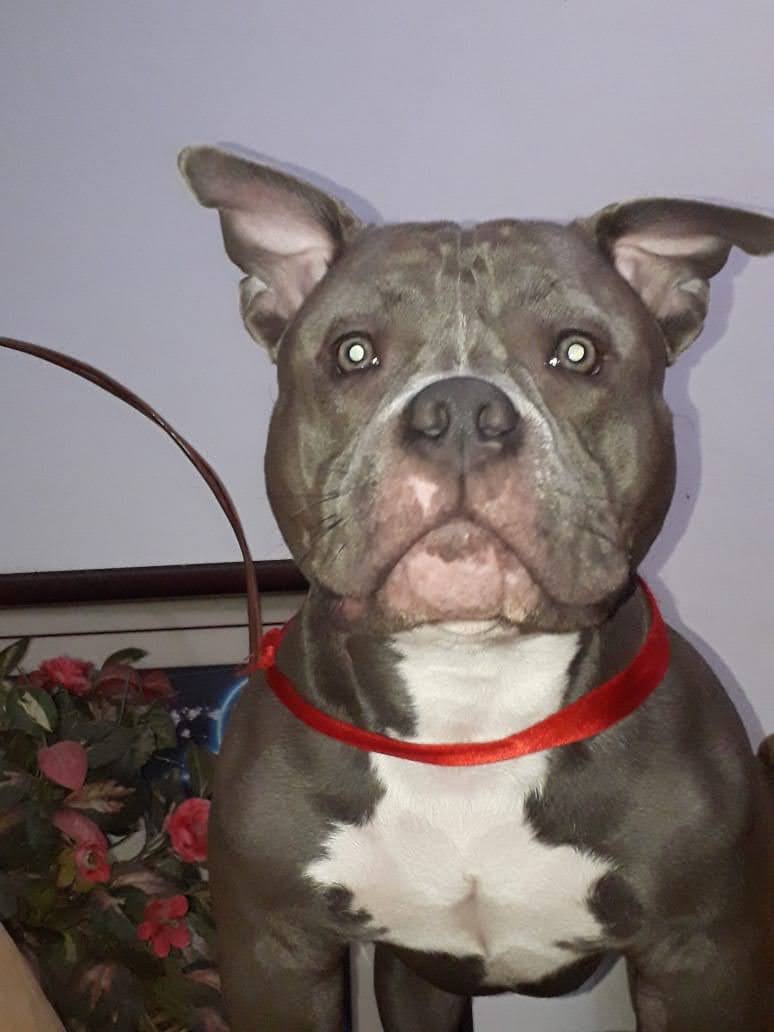The American Bully is a breed that combines strength, loyalty, and a surprisingly gentle heart. Despite their muscular build and powerful stance, these dogs are known for being affectionate, family-oriented, and eager to please. If you’re lucky enough to share your home with one — like Faruk — you know that behind the tough look is a loyal and loving soul.
In this complete care guide, we’ll explore everything you need to raise a healthy, balanced, and happy American Bully.
Understanding the American Bully
The American Bully is a relatively new breed developed in the 1990s in the United States. It was created by crossing American Pit Bull Terriers with American Staffordshire Terriers and other bulldog-type breeds to enhance their companion traits.
Key characteristics:
- Confident, calm, and courageous
- Deeply loyal to family
- Gentle and tolerant with children
- Muscular and athletic
- Protective but not aggressive by nature
They’re not the same as a Pit Bull — American Bullies are specifically bred for companionship, not fighting or guarding.
Physical Features and Breed Types
American Bullies come in several size categories:
- Pocket: Smallest, compact but muscular
- Standard: Balanced and medium-sized
- Classic: More defined with less exaggerated features
- XL: Larger, heavier, still calm and affectionate
Regardless of size, they share a broad chest, strong jaw, and short coat, with a head-turning, powerful appearance.
Temperament and Behavior
Bullies are affectionate and crave human connection. They are:
- Playful and goofy with their favorite people
- Naturally protective of home and family
- Gentle with children when socialized early
- Quiet indoors but need structured energy outlets
- Eager to please — making them highly trainable
They’re known for being “Velcro dogs” — always wanting to be close to their people.
Training and Socialization
Early and consistent training is essential to help your Bully thrive.
Training tips:
- Use positive reinforcement (treats, toys, affection)
- Focus on basic commands: sit, stay, come, heel
- Introduce leash walking early — they’re strong and can pull
- Socialize with people, dogs, environments from a young age
- Practice impulse control and calm behavior cues
American Bullies are very intelligent — but need structure to avoid becoming stubborn or overly independent.
Daily Exercise Needs
Despite their muscular build, American Bullies aren’t hyperactive, but they do need daily activity to stay fit and mentally happy.
Recommended activities:
- 45–60 minutes of exercise per day
- Walks, structured play, tug-of-war, or fetch
- Off-leash time in safe, fenced areas
- Agility training or obstacle courses
- Puzzle feeders for mental stimulation
Regular activity prevents boredom, frustration, and destructive behaviors.
Feeding and Nutrition
A healthy Bully starts with a healthy diet.
Feeding advice:
- Use high-protein food designed for medium to large breeds
- Choose formulas that support joint and muscle health
- Avoid foods with fillers or excessive grains
- Feed twice daily and avoid overfeeding
- Keep water available at all times
Talk to your vet about supplements if your dog is particularly active or aging.
Grooming and Hygiene
Bullies are easy to groom thanks to their short coat, but they still need routine care.
Grooming checklist:
- Brush 1–2 times per week to remove loose hair and stimulate skin
- Bathe every 4–6 weeks or when dirty
- Clean ears weekly to prevent infections
- Trim nails every 2–3 weeks
- Brush teeth 2–3 times per week
Because of their skin folds, especially on the face and neck, make sure to dry thoroughly after baths or if they get wet.
Health Considerations
While generally healthy, American Bullies can be prone to:
- Hip and elbow dysplasia
- Skin allergies and irritations
- Brachycephalic syndrome (especially in short-muzzled types)
- Obesity if under-exercised
- Cherry eye and ear infections
Regular vet visits, a good diet, and consistent exercise help prevent most issues.
Living Environment
Bullies are adaptable and thrive in:
- Apartments or houses (if exercised properly)
- Calm, structured homes with clear routines
- Close proximity to their humans — they dislike being left alone too long
- Homes with or without other pets (if properly socialized)
They are indoor dogs and do best in environments where they are treated as part of the family.
Final Thoughts: Is the American Bully Right for You?
You’ll love this breed if you:
- Want a dog that’s strong and gentle at the same time
- Are willing to invest in training and socialization
- Enjoy outdoor activities and play sessions
- Want a loyal, affectionate companion
- Appreciate a protective dog with a big heart
Faruk is a perfect example of what makes the American Bully so special — loyal, loving, and proud to be part of the family. With proper care, your Bully will be a calm protector, playful friend, and forever companion.


Faruk amor da minha vida ❤️